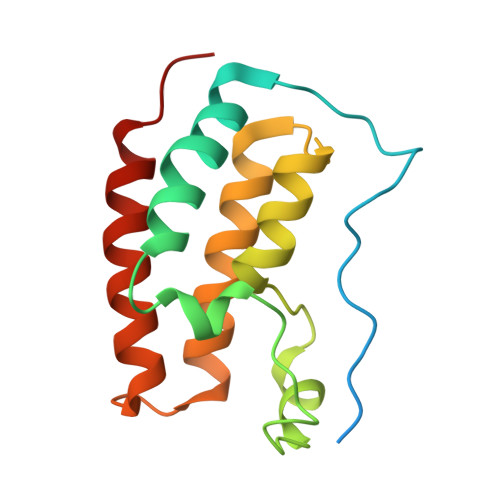BET bromodomain inhibitors regulate keratinocyte plasticity.
Schutzius, G., Kolter, C., Bergling, S., Tortelli, F., Fuchs, F., Renner, S., Guagnano, V., Cotesta, S., Rueeger, H., Faller, M., Bouchez, L., Salathe, A., Nigsch, F., Richards, S.M., Louis, M., Gruber, V., Aebi, A., Turner, J., Grandjean, F., Li, J., Dimitri, C., Thomas, J.R., Schirle, M., Blank, J., Drueckes, P., Vaupel, A., Tiedt, R., Manley, P.W., Klopp, J., Hemmig, R., Zink, F., Leroy, N., Carbone, W., Roma, G., Keller, C.G., Dales, N., Beyerbach, A., Zimmerlin, A., Bonenfant, D., Terranova, R., Berwick, A., Sahambi, S., Reynolds, A., Jennings, L.L., Ruffner, H., Tarsa, P., Bouwmeester, T., Driver, V., Frederiksen, M., Lohmann, F., Kirkland, S.(2021) Nat Chem Biol 17: 280-290
- PubMed: 33462494
- DOI: https://doi.org/10.1038/s41589-020-00716-z
- Primary Citation of Related Structures:
6ZCI - PubMed Abstract:
Although most acute skin wounds heal rapidly, non-healing skin ulcers represent an increasing and substantial unmet medical need that urgently requires effective therapeutics. Keratinocytes resurface wounds to re-establish the epidermal barrier by transitioning to an activated, migratory state, but this ability is lost in dysfunctional chronic wounds. Small-molecule regulators of keratinocyte plasticity with the potential to reverse keratinocyte malfunction in situ could offer a novel therapeutic approach in skin wound healing. Utilizing high-throughput phenotypic screening of primary keratinocytes, we identify such small molecules, including bromodomain and extra-terminal domain (BET) protein family inhibitors (BETi). BETi induce a sustained activated, migratory state in keratinocytes in vitro, increase activation markers in human epidermis ex vivo and enhance skin wound healing in vivo. Our findings suggest potential clinical utility of BETi in promoting keratinocyte re-epithelialization of skin wounds. Importantly, this novel property of BETi is exclusively observed after transient low-dose exposure, revealing new potential for this compound class.
- Novartis Institutes for BioMedical Research, Basel, Switzerland.
Organizational Affiliation:

















